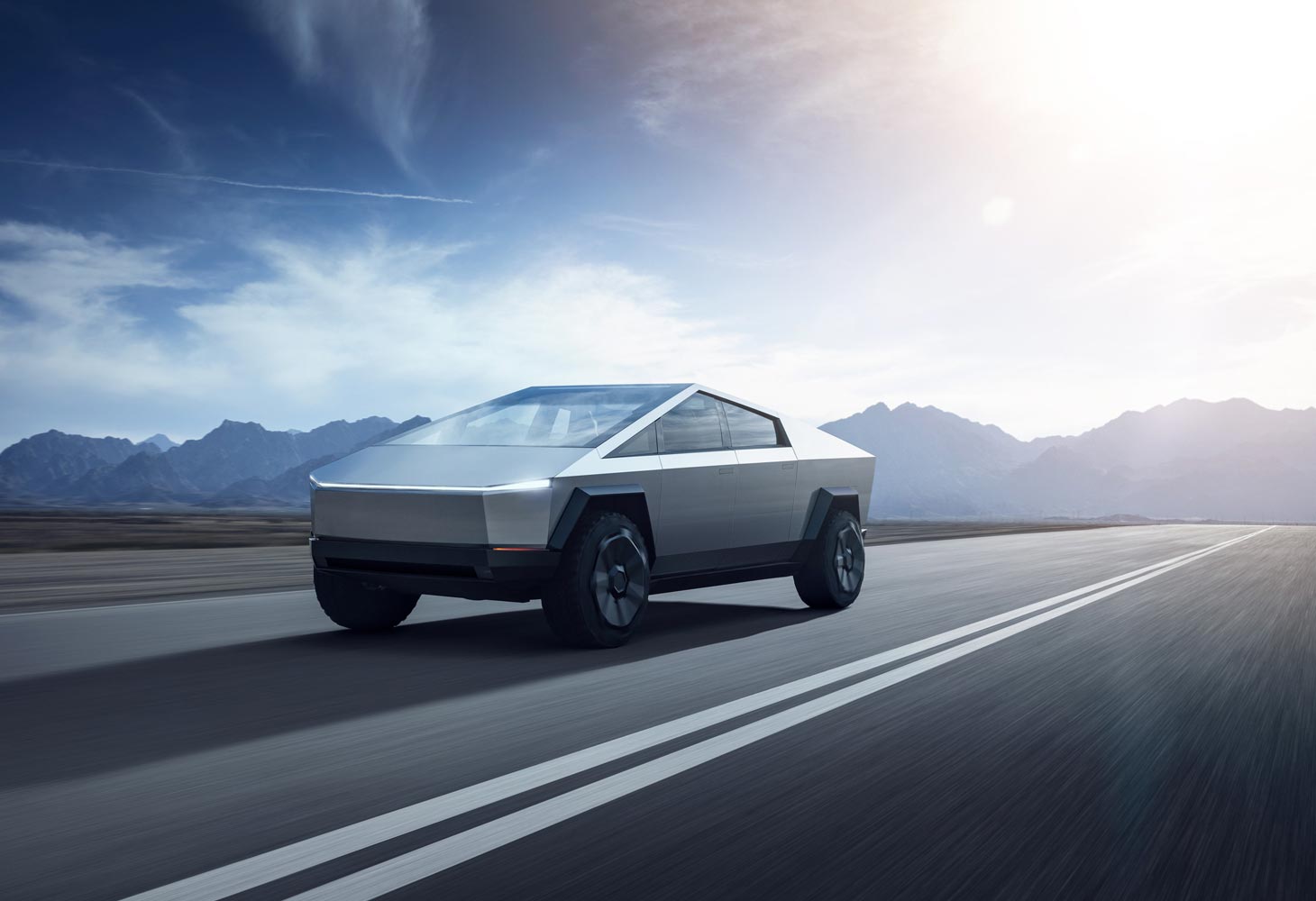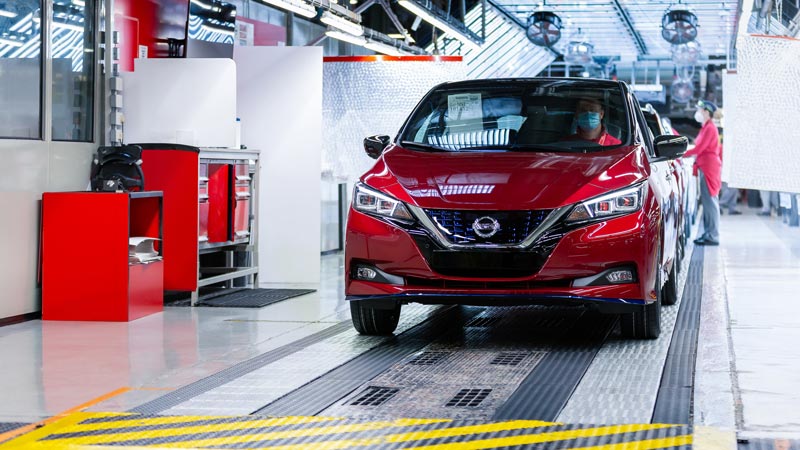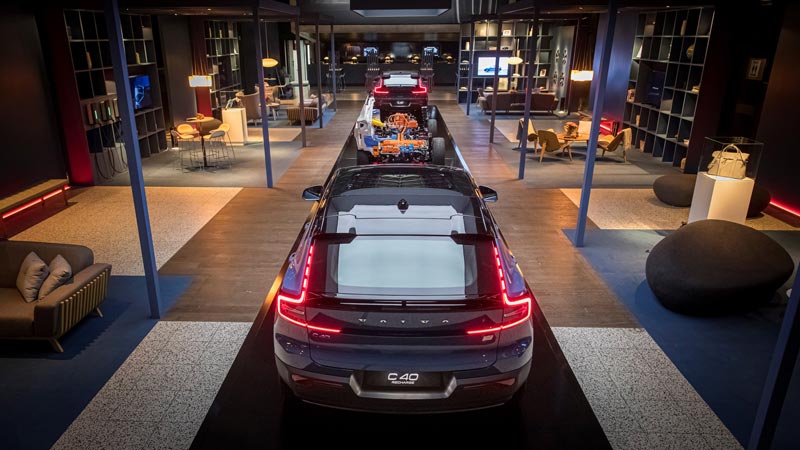
Momentum for zero-emission vehicles is accelerating
Over the past few years, talk of the enduring nature of the internal combustion engine (ICE) has seemingly overshadowed the narrative around the rise of electric vehicles (EV). Until recently, many industry stakeholders have been clinging to the suggestion that the ICE will continue to play the primary role in road transportation for decades.

ICE aficionados have cited a lack of charging infrastructure, high battery prices, the poor range of EVs and a lack of consumer desire as key reasons why the ICE will remain the vehicle of choice in the foreseeable future. According to the 2022 Global Automotive Consumer study by Deloitte, a report based on a survey of more than 26,000 consumers from 25 countries, driving range is the top concern for consumers in Germany, China and the United States. Asian drivers are more worried about the lack of public charging infrastructure, particularly those in Southeast Asia, the Republic of Korea, India and Japan.
Perhaps this is wishful thinking by companies that are reliant on the cash cow that is the ICE, or maybe it is part of a surreptitious effort to delay a shift in the market. It could simply be a misplaced optimism in the ability of the ICE to compete in a low-carbon environment.
In the first half of 2021 EVs exceeded 7% of global car sales, up from 2.8% in 2019, according to Zero-Emission Vehicles Factbook—a BloombergNEF special report prepared for COP26. Annual EV sales are projected at around 5.6 million units in the full year. Sales were 2.1 million units in 2019, when the last meeting of the Conference of the Parties was held. Nearly 13 million passenger EVs and fuel cell electric vehicles (FCV) are on the road, with the passenger fleet doubling since 2019.
The global fleet of four-wheeled road vehicles currently sits at almost 1.5 billion, with a growth rate of around 1% in 2021. With EVs commanding such a small proportion of the fleet, you can understand a certain cynicism at suggestions the ICE will disappear anytime soon. However, a recent report produced by BloombergNEF, at the request of the U.K. COP26 Presidency for the 2021 United Nations Climate Change Conference, makes it clear that progress waits for no man.
Zero-emission vehicles will take more market share
The Zero-Emission Vehicles Factbook, released on November 10, 2021, indicates that momentum towards zero-emissions road transport has accelerated considerably. BloombergNEF (BNEF) suggests the future for zero-emission vehicles (ZEV) is brighter than ever and that ZEV will take more market share, much sooner than previously expected. ZEVs are defined in the report as vehicles with no tailpipe carbon dioxide (CO2) emissions and include pure battery electric vehicles (BEV) and FCVs, neither of which have internal combustion engines.
In 2019, BNEF’s Electric Vehicle Outlook forecast there would be 495 million ZEVs on the road in 2040. Just two years later, BNEF now expects the global passenger and commercial ZEV fleet will exceed 677 million vehicles in the same timeframe. ZEVs will comprise 39% of the 2040 passenger vehicle fleet, up from 26% in the earlier report. The Factbook also expects that the ZEV share of the commercial fleet in 2040 will increase from 19% to 24%.
It’s not only BNEF that is having a change of heart on the popularity of EVs. All of the recent major outlooks for EVs have become more bullish. IEA’s latest Global EV Outlook increased BEV fleet forecasts by 7% to 91 million in one scenario. In a recent World of Oil publication, the Organisation of the Petroleum Exporting Countries (OPEC) increased EV and FCV fleet projections by 11% to 369 million vehicles in 2040. In its 2021 International Energy Outlook, the U.S. Energy Information Administration (EIA), the statistical agency of the U.S. Department of Energy, predicts the global light-duty conventional vehicle fleet (gasoline, diesel, etc.) will peak in 2038.
Global ZEV share projected to reach 70% by 2040

Tens of millions of ZEVs are arriving much sooner than previously expected. In BNEF’s latest outlook, the global ZEV share of passenger vehicle sales reaches 70% by 2040. This is a staggering 20 percentage points higher than 2019 estimates where BEVs were expected to contribute just half of sales. Though, it is worth noting that the 2019 study did not include FCVs.
In its state policy scenario, IEA predicts that 11% of passenger vehicle sales will be BEVs by 2030. Though, with EVs accounting for 7% of global new car sales today, the BNEF report, which assumes ZEV share of sales will reach 29% by 2030, is perhaps a more accurate forecast.
After falling in 2020 due to the global Covid-19 pandemic, global road transport emissions are tracking upwards again. Governments around the world continue to battle the pandemic, however, most are also keeping one eye on the next potential calamitous event—climate change. In many jurisdictions, purchase incentives have been offered to encourage the sale of EVs. China has been the most generous, though, the world’s largest ZEV market is phasing out these incentives in 2022. The Factbook indicates that government policies have evolved beyond subsidies to market-based mechanisms. Direct purchase incentives are making way for more stringent fuel economy targets in Europe and China that are forcing OEMs to launch new models and ensure they are accessible to consumers.
In the past, OEMs have been accused of pulling the handbrake on EV technology. BNEF’s report indicates that automakers are now far more devoted to an electric future. A BNEF evaluation that incorporates EV sales, EV revenues and model counts indicates OEMs are 45% more committed than two years ago.
Automakers target 40 million annual EV sales by 2030

Revenues from EVs jumped from USD81 billion in 2019 to USD111 billion in 2020—despite the impact of the pandemic, and automakers are getting far more ZEVs out the door. 500 ZEV models are available globally, a 37% increase on 2019, and automakers are targeting more than 40 million EV sales per year by 2030, says BNEF.
EVs are already a major contributor to sales volumes in Europe. 14% of sales in the first half of 2021 were EVs, compared to just 3.4% in 2019, and several premium brands have exceeded 20% share of sales including Volvo (39%), BMW (20%) and Daimler (20%).
Reductions in the cost of batteries are likely to pour further fuel on the EV fire. The BNEF Factbook highlights a decrease in cost from USD1,191 per kWh to USD137 per kWh in 2020. The combination of greater production capacity, greater demand from automotive manufacturers, and improved battery density/ designs are contributing to the reduction in the price of batteries.
Despite upping the ante, the Zero-Emission Vehicles Factbook indicates that automakers’ ambitions do not yet match country targets. 18 national governments and 27 regional and municipal authorities have announced they are phasing out new ICE sales. This is six more than in 2019 as the UK, Canada, Austria, Singapore, Chile and Greece focus their efforts on eliminating internal combustion engine vehicles. A European Commission proposal to phase out the ICE by 2035 will add a further 19 to the list.
However, the BNEF report claims that EV adoption in Europe needs to reach 42% of passenger car sales to achieve the 37.5% reduction of CO2 emissions required by 2030. Emissions targets in Europe are set to become more stringent. A proposed 55% CO2 reduction target means 60% of new car sales would need to be electric in just nine years, according to BNEF. While several automakers have declared their intention to phase out ICE vehicles by 2035, the automakers involved account for a much lower proportion than the 41% of the global market already included in national and EU targets.
Europe and China leading the way
Europe and China are leading the way in terms of intent and action, leaving the United States to play catch up. Only 3% of cars sold in North America in the first half of 2021 were electric, compared to 17% in Europe and 11% in China. State-level phase-out targets in the United States account for 25% of passenger car sales, however, there is no national target for the end of ICE vehicles. North America continues to have the highest road transport emissions in the world with an estimated 1.5 gigatonnes of carbon dioxide (GtCO2) in 2021.
Only 1% of cars sold in Japan in the first half of 2021 were electric. At its Kenshiki event for the media in Brussels, Belgium, on December 2, 2021, Toyota Motor Europe outlined a path to 100% CO2 reduction by 2035 in Western Europe. The Japanese automaker indicated it will offer at least a 50% ZEV mix in 2030, with the ability to increase volumes if customer demand is higher. Though, the company caveats its ambition with the assumption that sufficient electric charging and hydrogen refuelling infrastructure is available within those timeframes. The company has also announced commercial production on the world’s first bi-polar nickel metal hydride (NiMh) battery has commenced. The battery is lower cost with double the density of a regular NiMh battery and uses less precious metals, they say.
The Zero-Emission Vehicles Factbook highlights positive trends for ZEVs and a huge step up from 2019 efforts to decarbonise the transportation industry. However, the report indicates that we are not yet able to confidently say that automotive manufacturers are on a zero-emissions trajectory. The report called for national, regional and local governments to raise their ambition and implement policies that support the transition to zero emissions transport.








